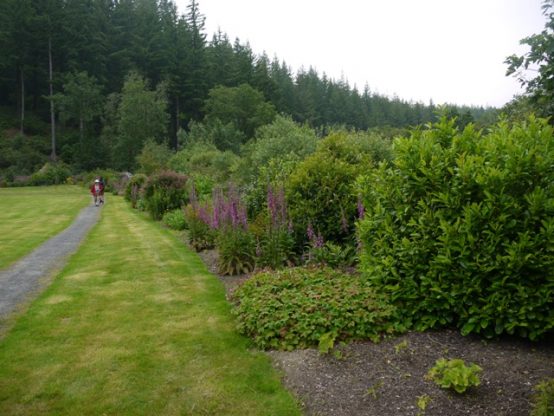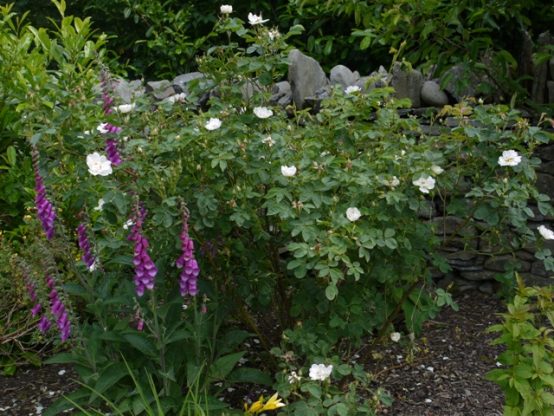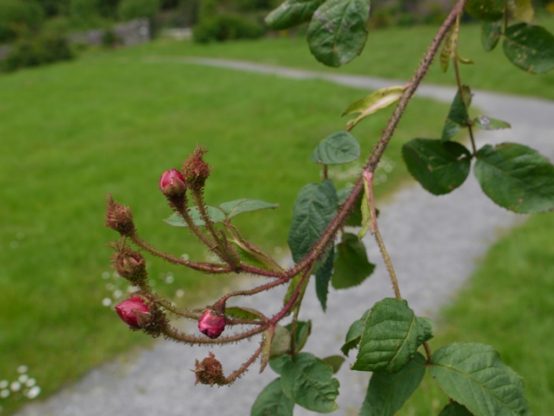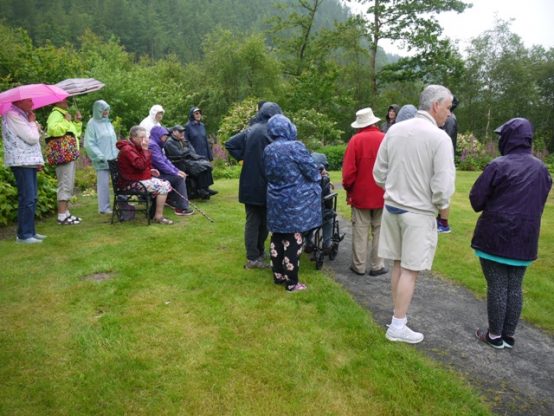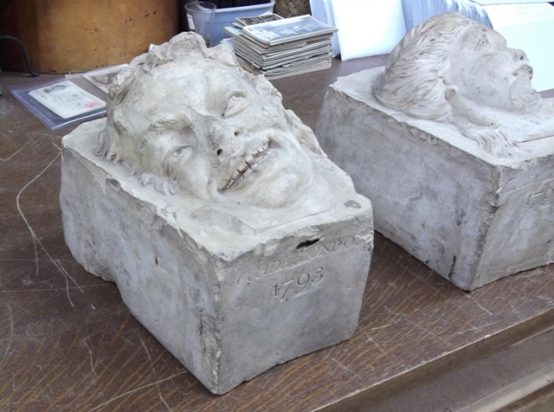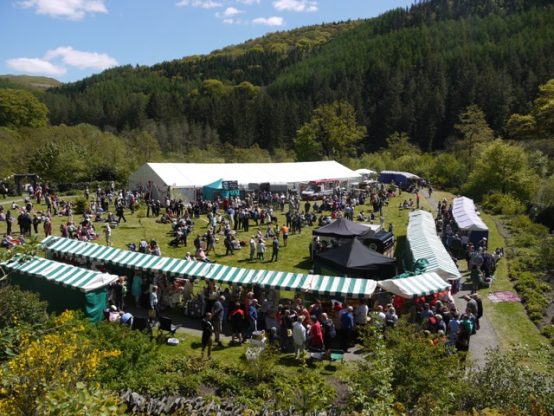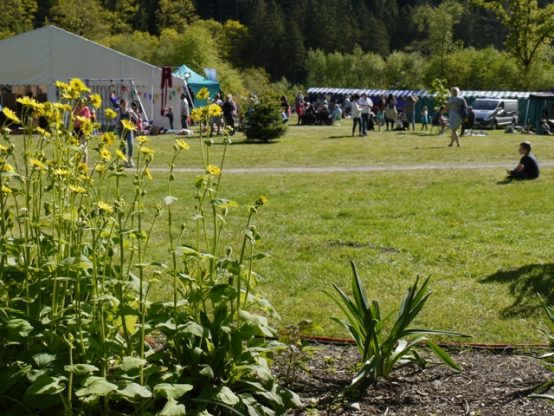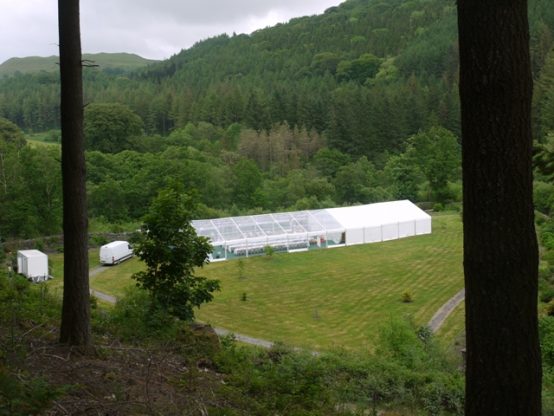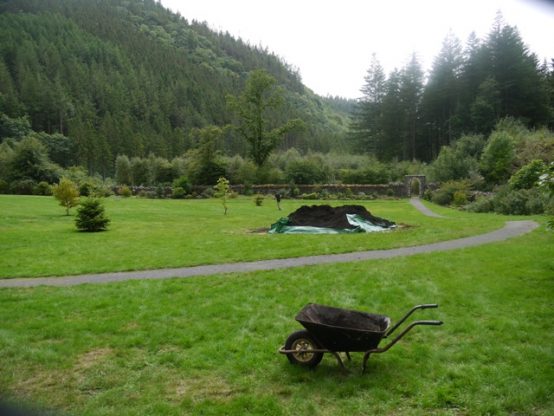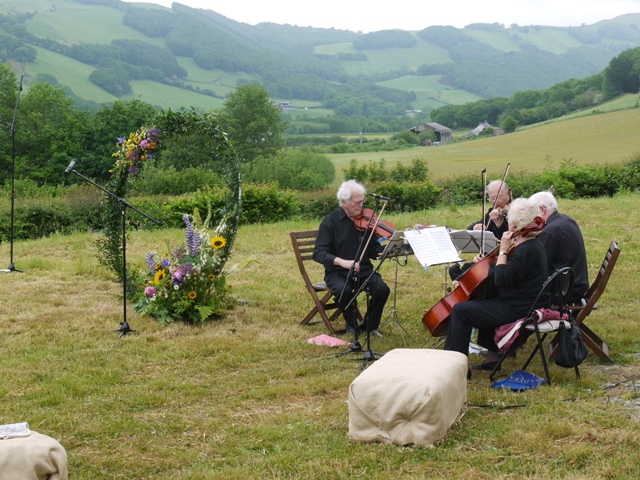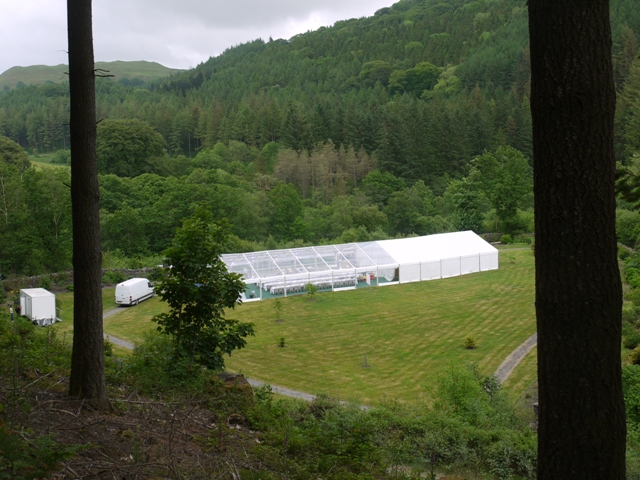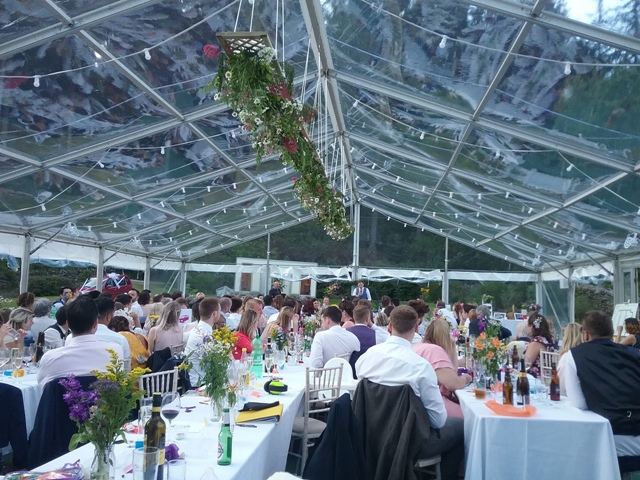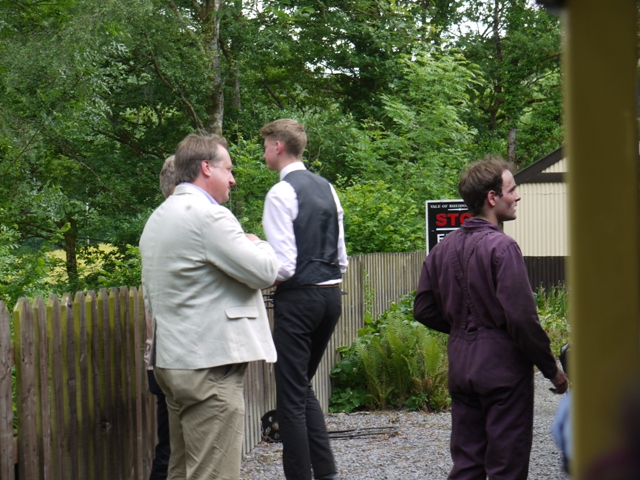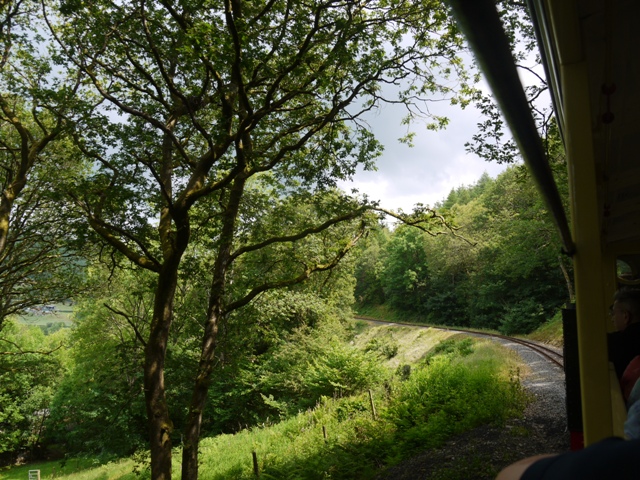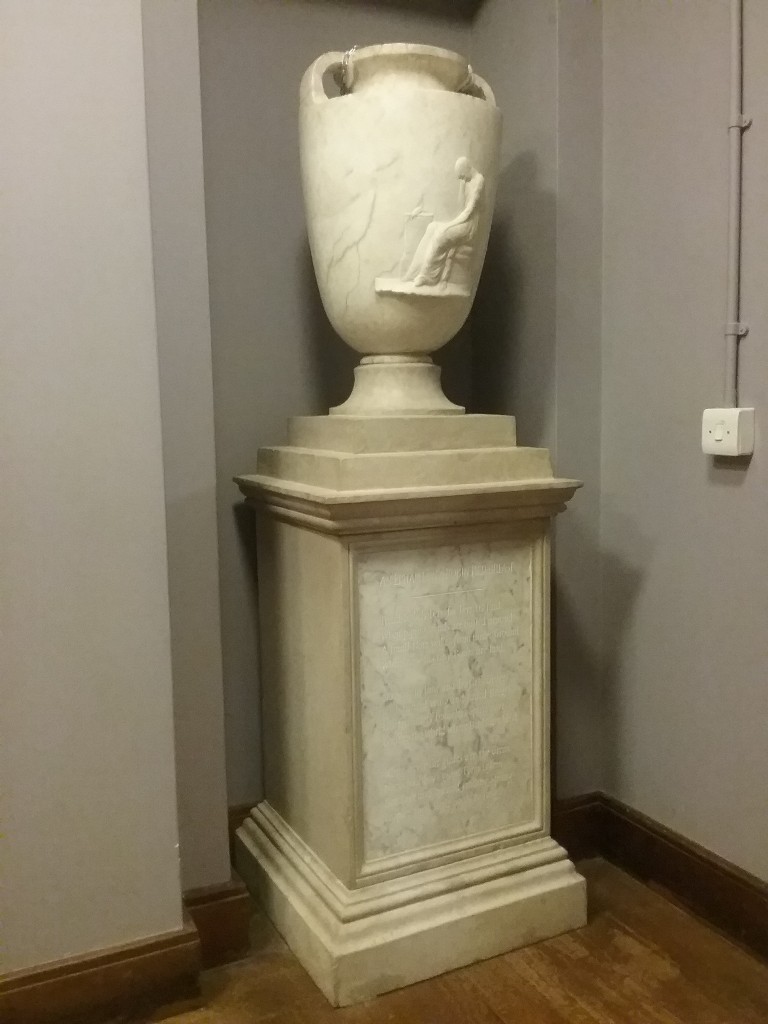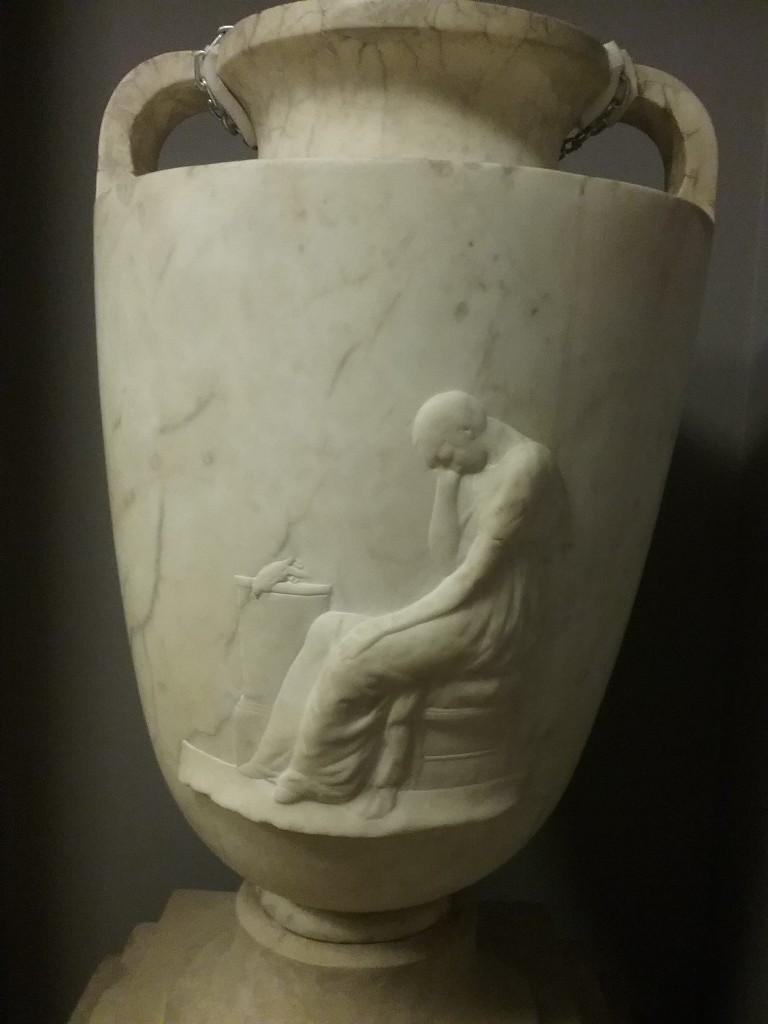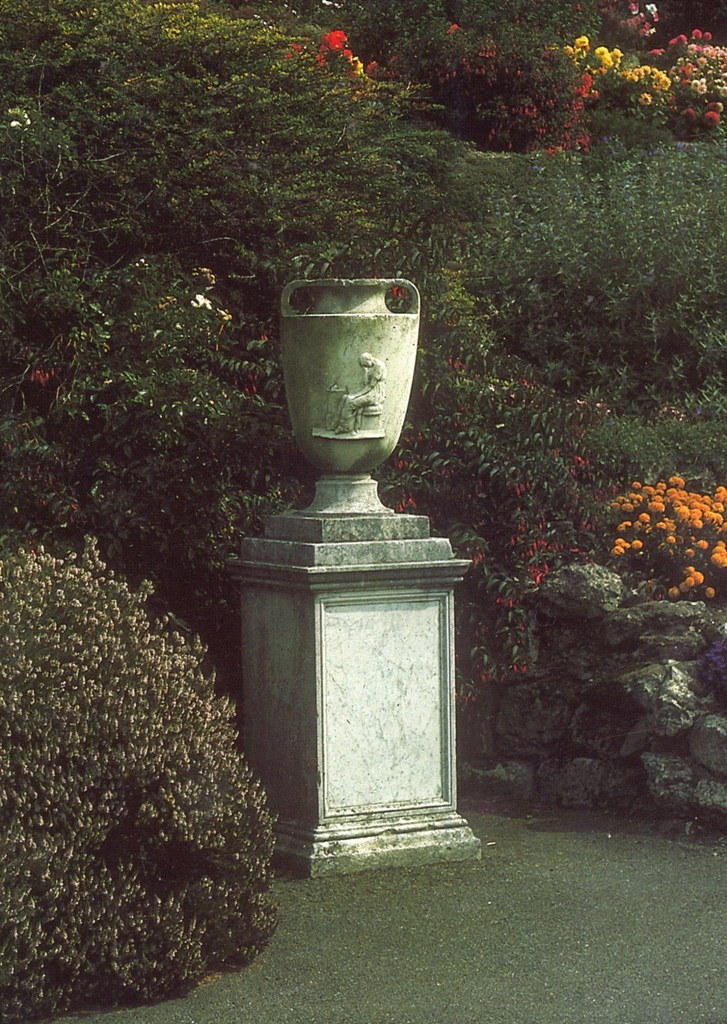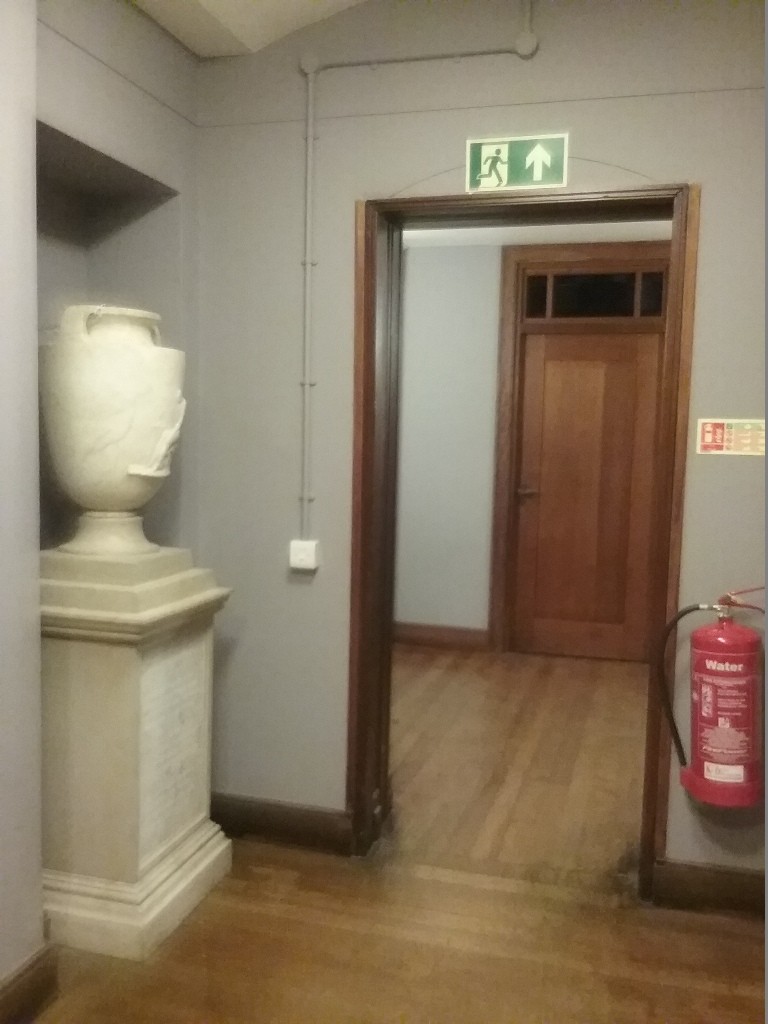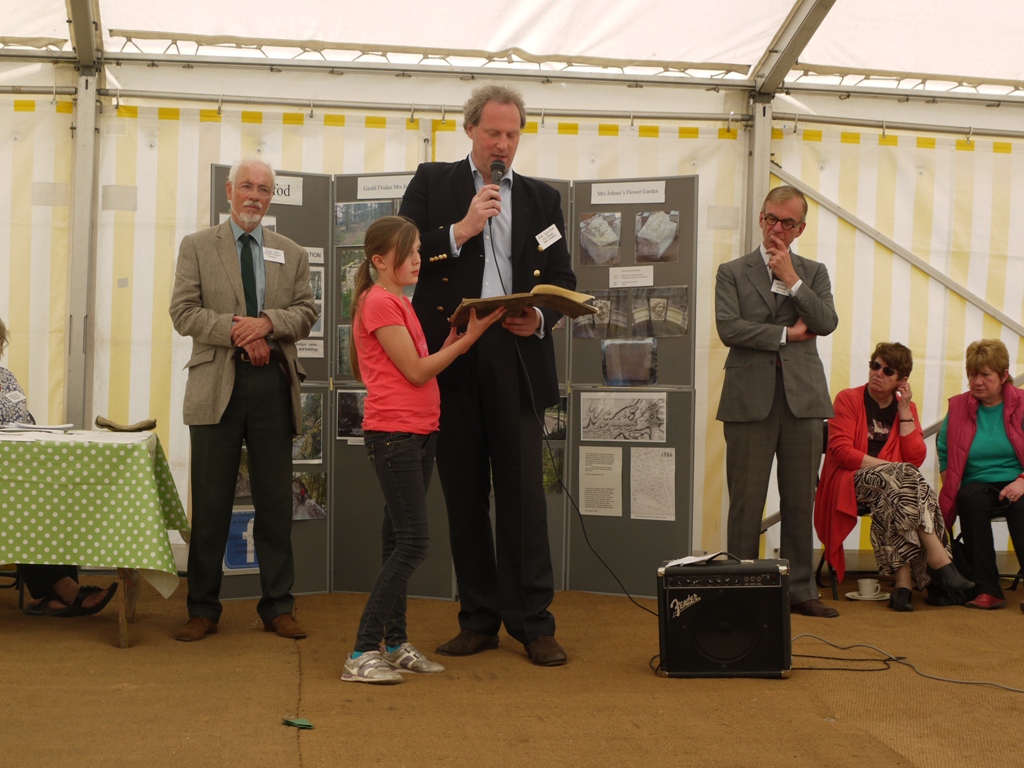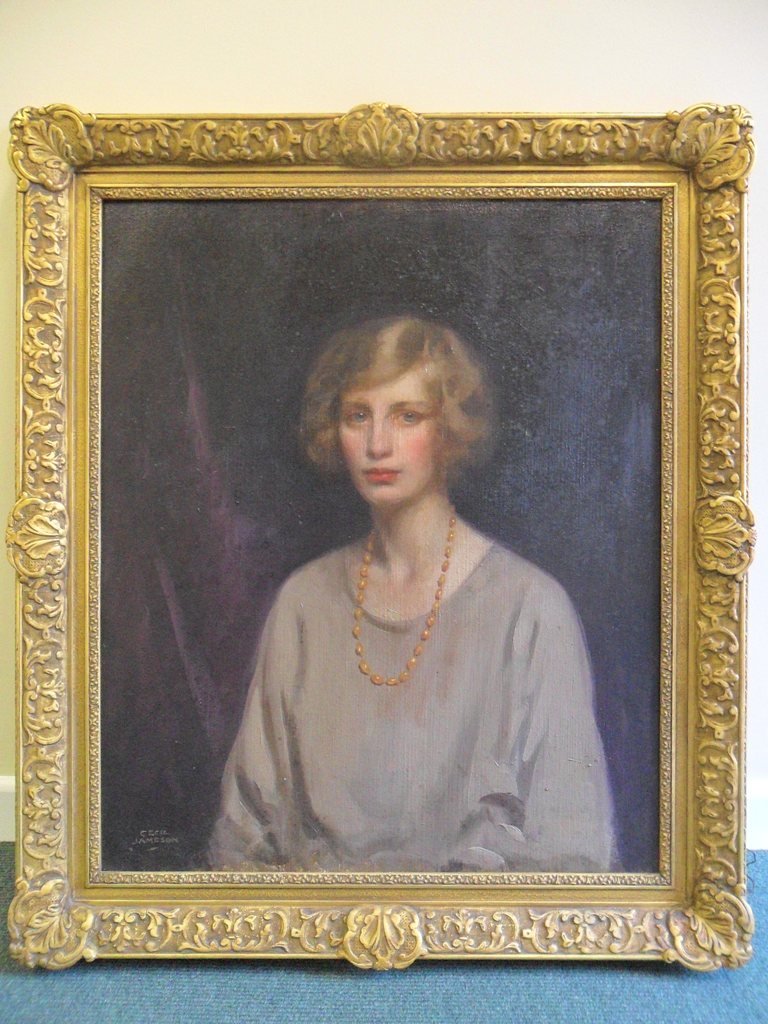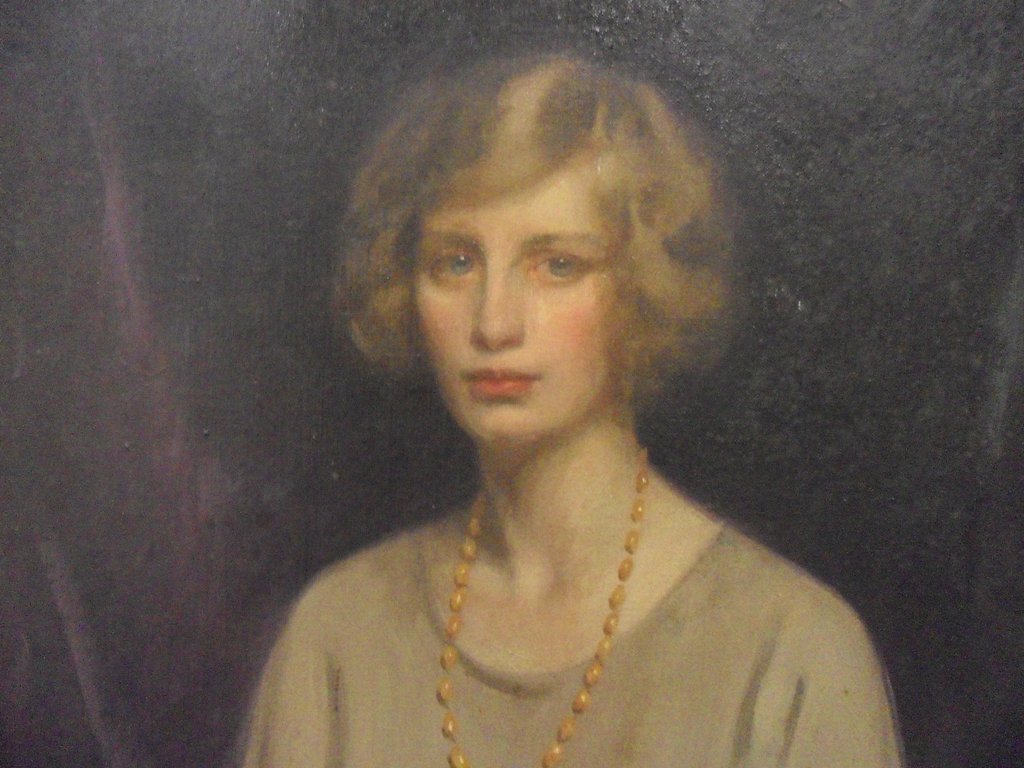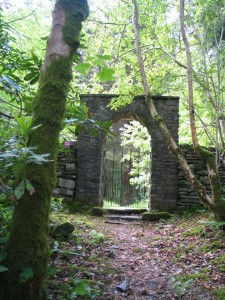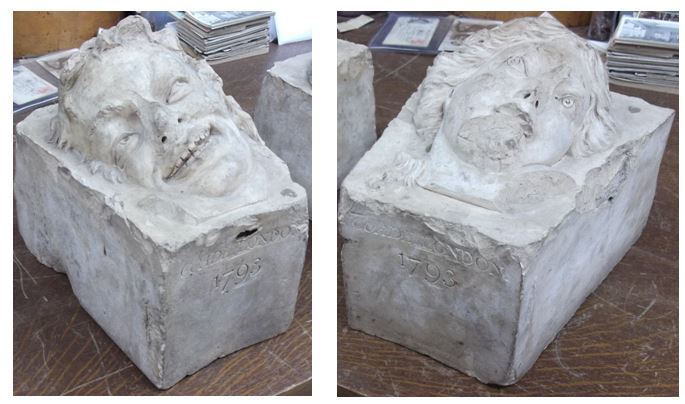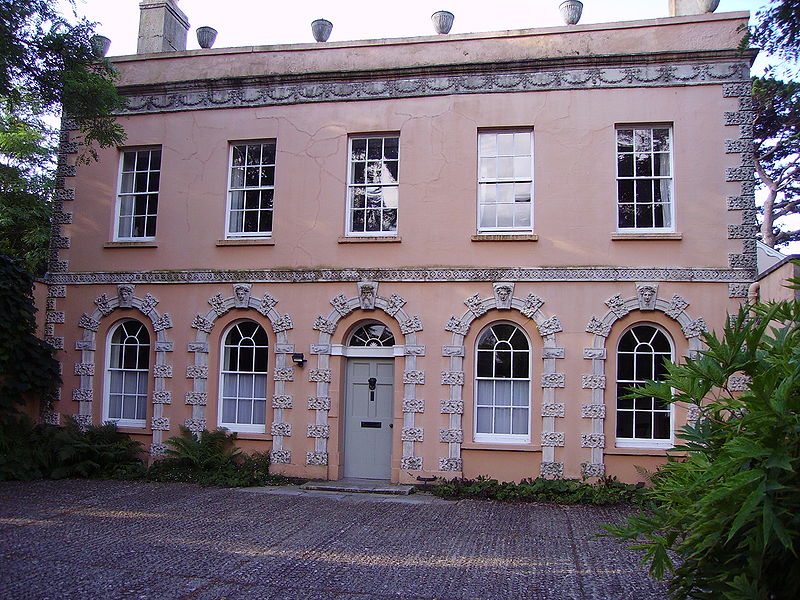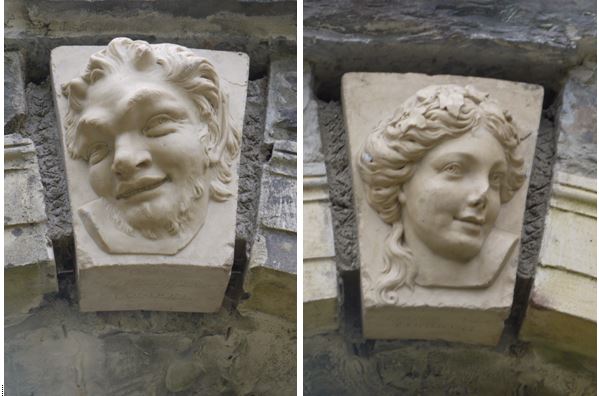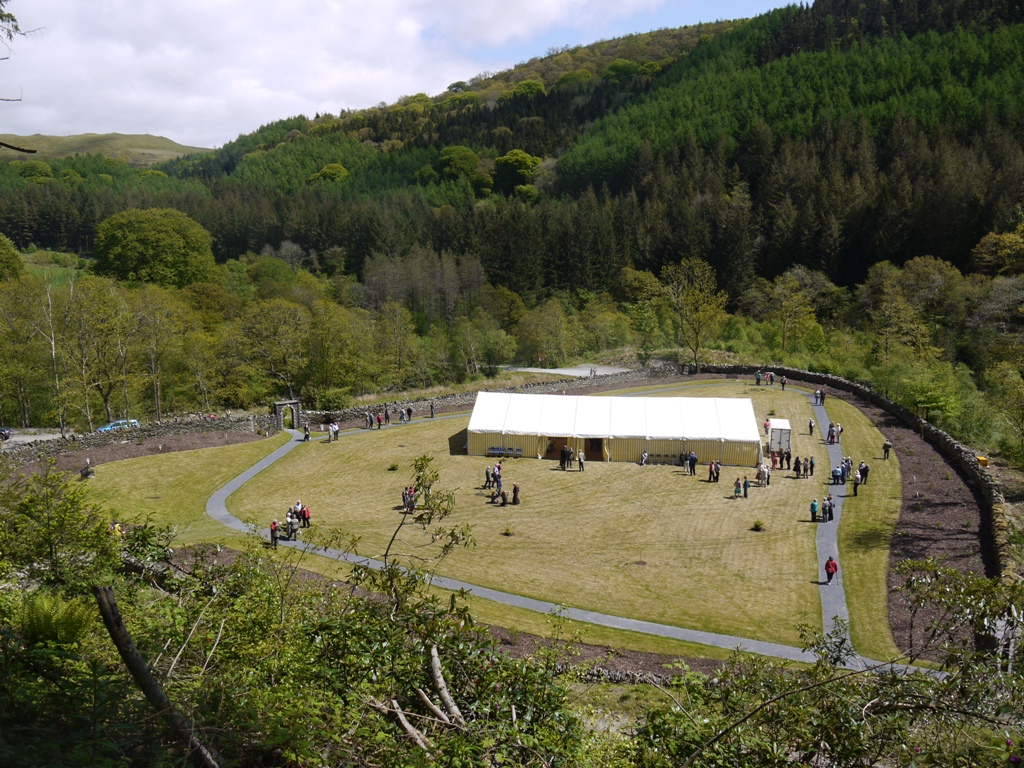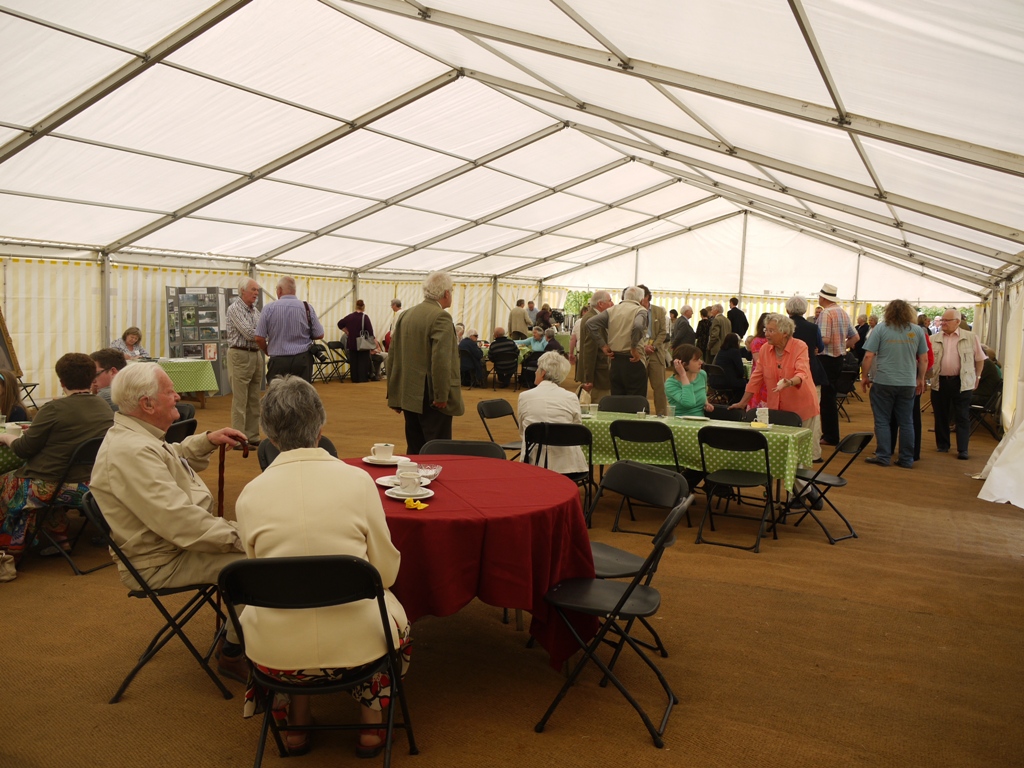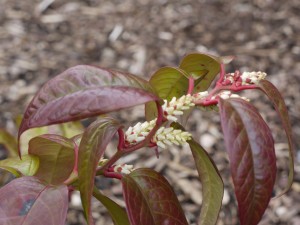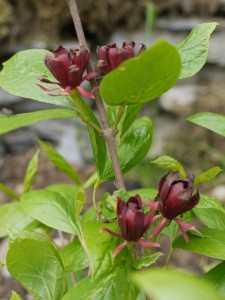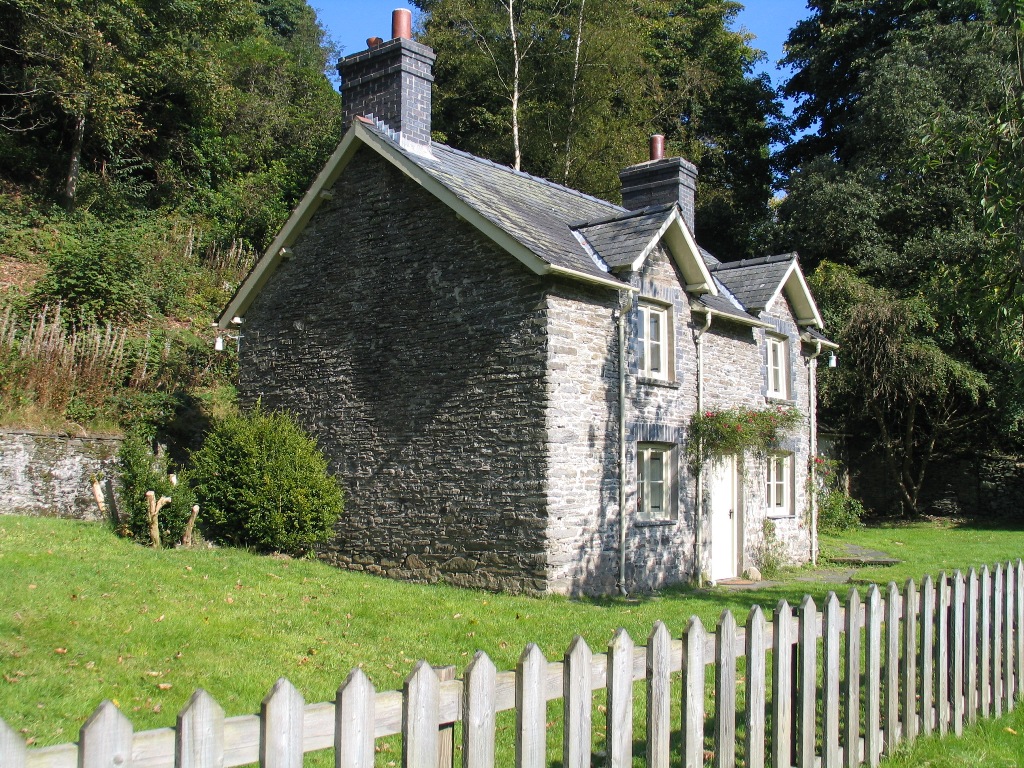by Caroline Palmer
Today was a fine day, sandwiched between the wind and rain of earlier in the week and yet another front anticipated tomorrow. I spent it weeding in Mrs Johnes’ Garden at Hafod. The garden is now ten years old, a transformation from its appearance in May 2011 when the sitka spruce plantation had been recently cleared and the circular path and lawn were reinstated along historic lines. The very first shrubs were planted in June 2012.
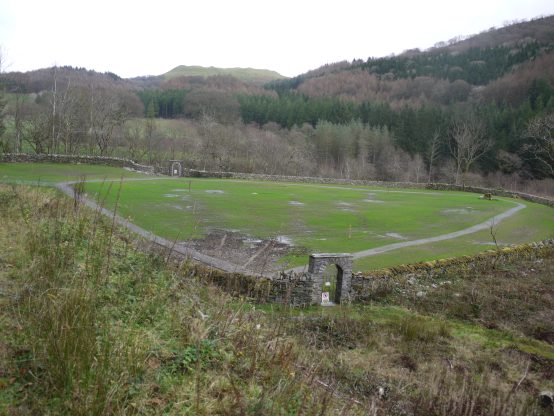
Mrs Johnes’ Garden
12 May 2011
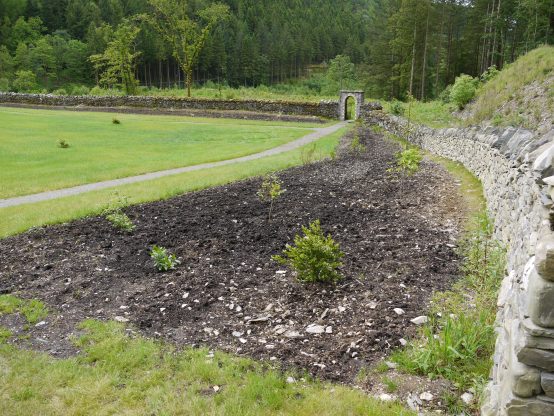
2012 New beginnings in this once-famous Georgian Flower Garden
The breakthrough for this ambitious project came as a result of the diplomatic skills of Peter White, then Director of the Royal Commission for Ancient and Historic Monuments Wales, who persuaded the Forestry Commission to reroute the forestry road which some 60 years previously had been driven through the abandoned garden.
Today the scene is very different, with a rich tapestry of shrubs, trees, and perennials overflowing the circular border. The plants have been scrupulously limited to those which would have been available to Mrs Johnes when she created her garden in the 1780s.
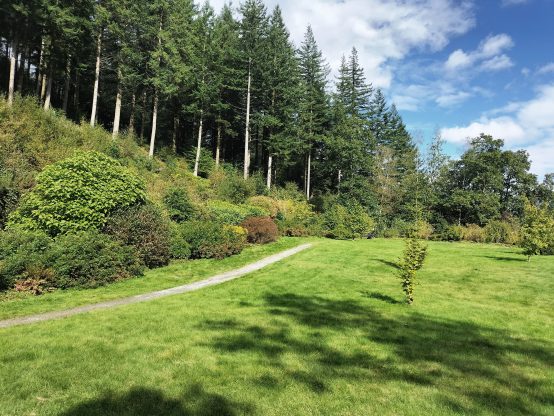
Autumn in Mrs Johnes’ garden, 29 September 2022
Small jewels lurk in these borders, such as the clumps of white autumn crocuses which are a magnet for bees, solitary wasps and butterfies all attracted by their nectar. I photographed a Wall ( Pararge megera) on the crocuses, and a Small Copper (Lycaena phlaeas) on the nearby Evening Primroses.
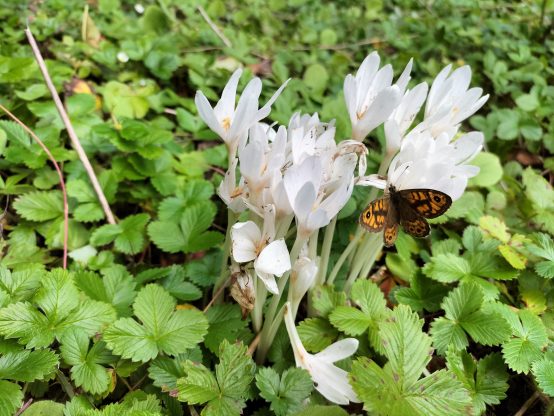
A Wall butterfly helps itself the the nectar of the Colchicums
The task for the weeder here is to remove the creeping buttercups from amongst the carpet of wild strawberries. In winter the strawberries are dormant while the buttercups seize the opportunity to enlarge and spread over the winter months, punching gaps in the tapestry.
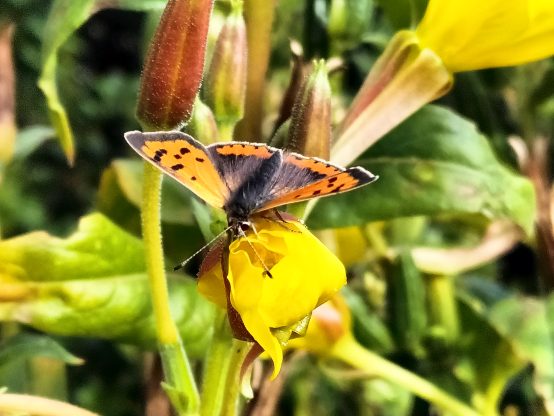
Small Copper butterfly on an Evening Primrose
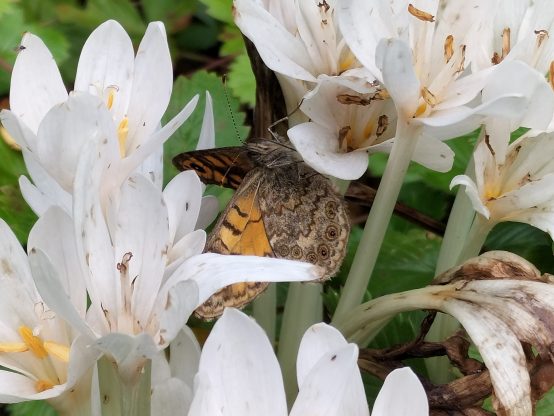
Wall
Many of the new must-have flowers offered to gardeners two hundred years ago came from the eastern states of the USA, and some have been selected for this garden. Delightful autumn blooms include the bright gold Rudbeckia hirta, and fluffy cushion flowers of White Snakeroot ( Ageratina altissima) which is very attractive to hoverflies.
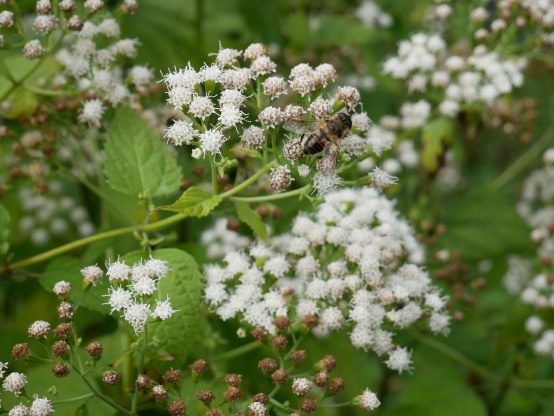
White Snakeroot
Another particular favourite of mine is the Pokeweed (Phytolacca americana) which has strikingly sinister black berries on magenta stems. These are powerfully poisonous berries, and all parts of the plant contain the toxin so consumption should be avoided. Pokeweed tea was used in traditional north American medicine as a purgative and emetic. Various pokeweed extracts and preparations are listed by alternative practitioners and credited with a staggering range of speculative applications in medicine, see verywellhealth.com
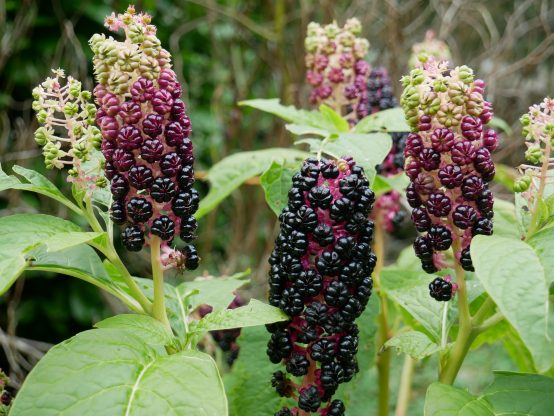
Pokeweed
However the site acknowledges that few of the therapeutic claims for the treatment of conditions ranging through tonsillitis, mumps, AIDS, skin conditions and certain cancers have been verified by science, so it is much wiser to simply admire the plant. I do notice that in spring the new shoots are very susceptible to slug damage, while later in the year the molluscs steer clear, presumably because the toxin intensifies over time.
A greater hazard to the weeder are the thorny briar roses which, at this time of year, are adorned with brilliant hips. When I was at school I was made to learn and recite Oberon’s speech in Midsummer Nights Dream.
I know a bank where the wild thyme blows,
Where oxlips and the nodding violet grows,
Quite over-canopied with luscious woodbine,
With sweet musk-roses and with eglantine:
There sleeps Titania sometime of the night,
It sounds delightful, but the Sweetbriar Rose or Eglantine which droops hazardously over the border has the sharpest, thinnest incurved claw-like thorns in the business, which will shred the skin of the unwary and tangle in their clothes.
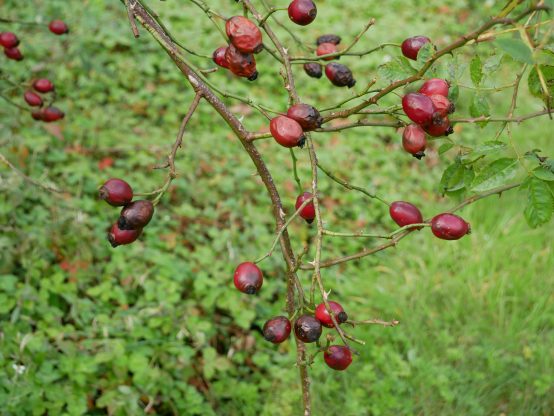
The ferociously thorny Eglantine Rose
The North American species Rosa virginiana is equally spiny but at least these are straight thorns which release you when you draw back! Its hips are rounder and paler, covered in fine, easily dislodged hairs.
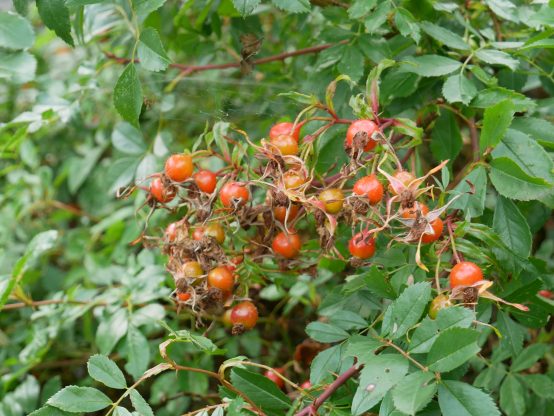
The Prairie Rose, Rosa virginiana
Mrs Johnes Garden was restored by the Hafod Trust, which pioneered the rescue of this important Picturesque landscape. This Trust will shortly be disbanded as the Hafod Estate is now in the care of the National Trust. It is hoped that the tradition of National Trust volunteering will soon lead to a larger team of volunteer weeders who which will keep the garden under control.

